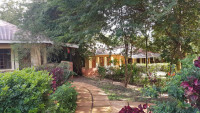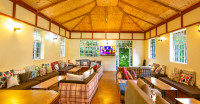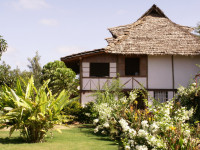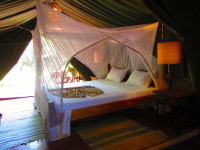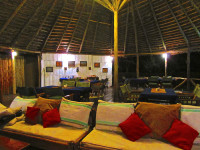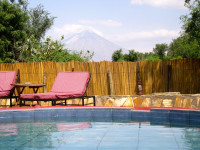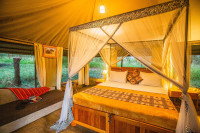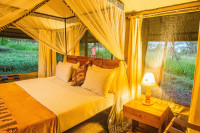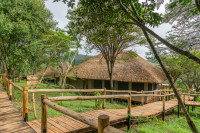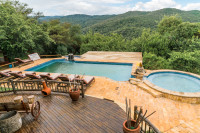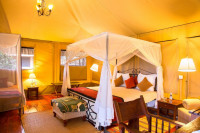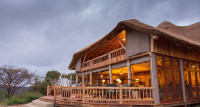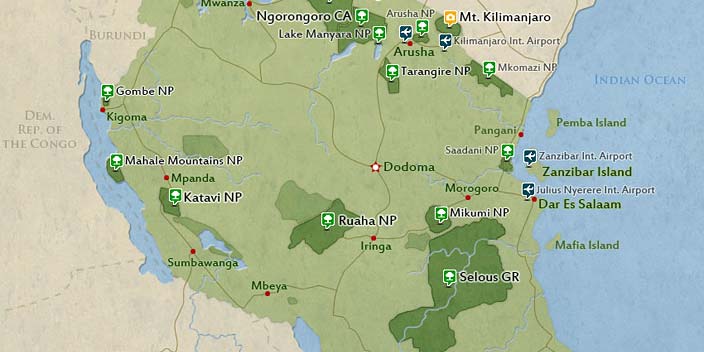
$1,870 pp (USD)
2 travelers on Start dateArrival
Arrival

Day 1
Tarangire National Park
Tarangire National Park
After a safari briefing in the morning and an approximate 2-hour drive, you will arrive at the Tarangire National Park. Giant baobab trees, bush savannah and seasonal marshes add to the wonder of this nature reserve. The Tarangire National Park is considered one of the best places to view elephants up close. The park is also home to buffaloes, zebras and wildebeests which are always closely followed by a range of predators such as lions. Leopards are seen now and then but cheetahs are rarely spotted. From the open roof of the safari jeep, you will be able to absorb the landscape and watch the animals. In the late afternoon, you will leave the park and drive to the lodge for overnight.
- Main Destination:
- Tarangire National Park
- Accommodation:
- Eileen's Trees Inn
- Meals & Drinks:

Day 2
Lake Natron
Lake Natron
Just past Mto wa Mbu, you'll leave the asphalted road; along the East African Rift Valley, the drive continues on adventurous slopes. The drive leads past Maasai villages and the holy mountain of the Maasai, the Ol Doinyo Lengai. As soon as the Maasai village, Ngare Sero, comes into sight, it is not too far to the lake. The outlet Lake Natron is the home of a remarkable variety of birds, in particular about 2.5 million dwarf flamingos. The lake serves them as a regular breeding ground. The water is strongly saline and the basis of life for unicellular algae and bacteria, which are responsible for the planar red-brown to the purple-violet colouring of the lake. The area around Lake Natron is one of the most beautiful and unspoilt regions in Africa. You will take a hike to the lake and then you will visit the nearby waterfalls, a true oasis with awesome waters to swim in. You'll spend the night at Natron River Camp at Lake Natron.
- Main Destination:
- Lake Natron
- Accommodation:
- Natron River Camp
- Meals & Drinks:

Day 3-4
Serengeti National Park
Serengeti National Park
You won’t find many better national parks in Africa than the Serengeti, which has few rivals when it comes to both the numbers and variety of animals. Track down the annual migration of wildebeest and zebra. Enjoy the vast horizons that are perfect for spotting predators (especially lions, leopards, cheetahs and spotted hyenas) and their prey (buffaloes, impalas and kongoni), as well as elephants and giraffes. If you’re really lucky you’ll see a hunt, one of the most exhilarating sights anywhere in the wild. And at every turn, revel in its beauty, with flat-topped acacia trees silhouetted against the setting sun, and so many other classic African safari images.
- Main Destination:
- Serengeti National Park
- Accommodation:
- Tukaone Hembe Camp
- Meals & Drinks:

Day 5
Ngorongoro Crater
Ngorongoro Crater
Today you’ll visit Ngorongoro Crater, one of the most beautiful natural sights in Africa, a place where you’ll experience otherworldly beauty with extraordinary wildlife. Watch as, from above, morning mist rolls up and over the crater rim, and notice how the steep walls suggest a place unlike any other. Down below on the crater floor, explore a lost world preserved in a state of pristine isolation, one that shelters lions and hyenas, elephants and black rhinos, flamingos and golden jackals. There are also forests, hippo-filled lakes, a salt pan and hyena dens, and you’ll never lose the sense that you’ve stumbled into a safari theme park where everything’s wild.
- Main Destination:
- Ngorongoro Crater
- Accommodation:
- Ngorongoro Forest Tented Lodge
- Meals & Drinks:

Day 6
Lake Manyara National Park - Arusha/JRO
Lake Manyara National Park - Arusha/JRO
The park is dominated by the lake of the same name, which attracts large colonies of water birds. Particularly impressive are the pink-colored flamingos, but also many other bird species such as cormorants, pelicans or storks can be observed here. A total of about 400 different bird species live in the park. The park is also famous for its tree-climbing lions, which are usually found in the central and open part of the park. During the safari, you will also see elephants, zebras, giraffes, buffaloes, hippos and many other animal species. At noon, you will leave the national park and head to Arusha/JRO.
- Main Destination:
- Lake Manyara National Park
- Accommodation:
- No accommodation (End of tour)
- Meals & Drinks:















